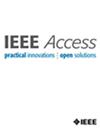地震相分析的PSO-CNN-LSTM模型:方法与应用
IF 3.4
3区 计算机科学
Q2 COMPUTER SCIENCE, INFORMATION SYSTEMS
引用次数: 0
摘要
地震相分析可以有效地圈定井间沉积相的分布规律,是沉积相研究的重要环节。针对传统人工解译方法效率低、主观性强的局限性,提出了一种结合粒子群优化的CNN-LSTM混合模型(PSO-CNN-LSTM)。该模型通过CNN架构系统地提取地震反射的空间特征,同时通过LSTM网络捕获时间波形依赖关系,PSO自动优化初始学习率和LSTM神经元计数等关键参数。实验结果表明,PSO-CNN-LSTM的分类准确率达到89.74%,分别比CNN(81.48%)、LSTM(81.63%)和基本CNN-LSTM(84.61%)模型高8.26%、8.11%和5.13%。该模型在SEG 2020基准数据集上表现出优异的性能,证实了自动参数优化有效地减少了人工干预,同时增强了收敛稳定性。实际应用表明,模型预测(使用有限的训练样本)与专家分析之间的解释结果一致,为非均质碳酸盐岩储层有利带的识别提供了可靠的证据。建立的智能波形分类工作流程验证了PSO-CNN-LSTM模型的鲁棒性,并为地震相分析提供了有效的解决方案,特别是在复杂的地质环境中。本文章由计算机程序翻译,如有差异,请以英文原文为准。
A PSO-CNN-LSTM Model for Seismic Facies Analysis: Methodology and Applications
Seismic facies analysis, as a crucial step in the study of depositional facies, effectively delineates the distribution patterns of depositional facies between wells. To address the limitations of conventional manual interpretation methods, particularly their low efficiency and strong subjectivity, this study proposes a hybrid CNN-LSTM model integrated with Particle Swarm Optimization (PSO-CNN-LSTM). The model systematically extracts spatial features of seismic reflections through CNN architecture while capturing temporal waveform dependencies via LSTM networks, with PSO automatically optimizing critical parameters including initial learning rate and LSTM neuron count. Experimental results demonstrate that PSO-CNN-LSTM achieves a classification accuracy of 89.74%, surpassing CNN (81.48%), LSTM (81.63%), and basic CNN-LSTM (84.61%) models by 8.26%, 8.11%, and 5.13% respectively. The model exhibits superior performance on the SEG 2020 benchmark dataset, confirming that automated parameter optimization effectively reduces manual intervention while enhancing convergence stability. Practical applications reveal consistent interpretation outcomes between the model’s predictions (using limited training samples) and expert analyses, providing reliable evidence for identifying favorable zones in heterogeneous carbonate reservoirs. The established intelligent waveform classification workflow validates PSO-CNN-LSTM model’s robustness and offers an efficient solution for seismic facies analysis, particularly in complex geological settings.
求助全文
通过发布文献求助,成功后即可免费获取论文全文。
去求助
来源期刊

IEEE Access
COMPUTER SCIENCE, INFORMATION SYSTEMSENGIN-ENGINEERING, ELECTRICAL & ELECTRONIC
CiteScore
9.80
自引率
7.70%
发文量
6673
审稿时长
6 weeks
期刊介绍:
IEEE Access® is a multidisciplinary, open access (OA), applications-oriented, all-electronic archival journal that continuously presents the results of original research or development across all of IEEE''s fields of interest.
IEEE Access will publish articles that are of high interest to readers, original, technically correct, and clearly presented. Supported by author publication charges (APC), its hallmarks are a rapid peer review and publication process with open access to all readers. Unlike IEEE''s traditional Transactions or Journals, reviews are "binary", in that reviewers will either Accept or Reject an article in the form it is submitted in order to achieve rapid turnaround. Especially encouraged are submissions on:
Multidisciplinary topics, or applications-oriented articles and negative results that do not fit within the scope of IEEE''s traditional journals.
Practical articles discussing new experiments or measurement techniques, interesting solutions to engineering.
Development of new or improved fabrication or manufacturing techniques.
Reviews or survey articles of new or evolving fields oriented to assist others in understanding the new area.
 求助内容:
求助内容: 应助结果提醒方式:
应助结果提醒方式:


